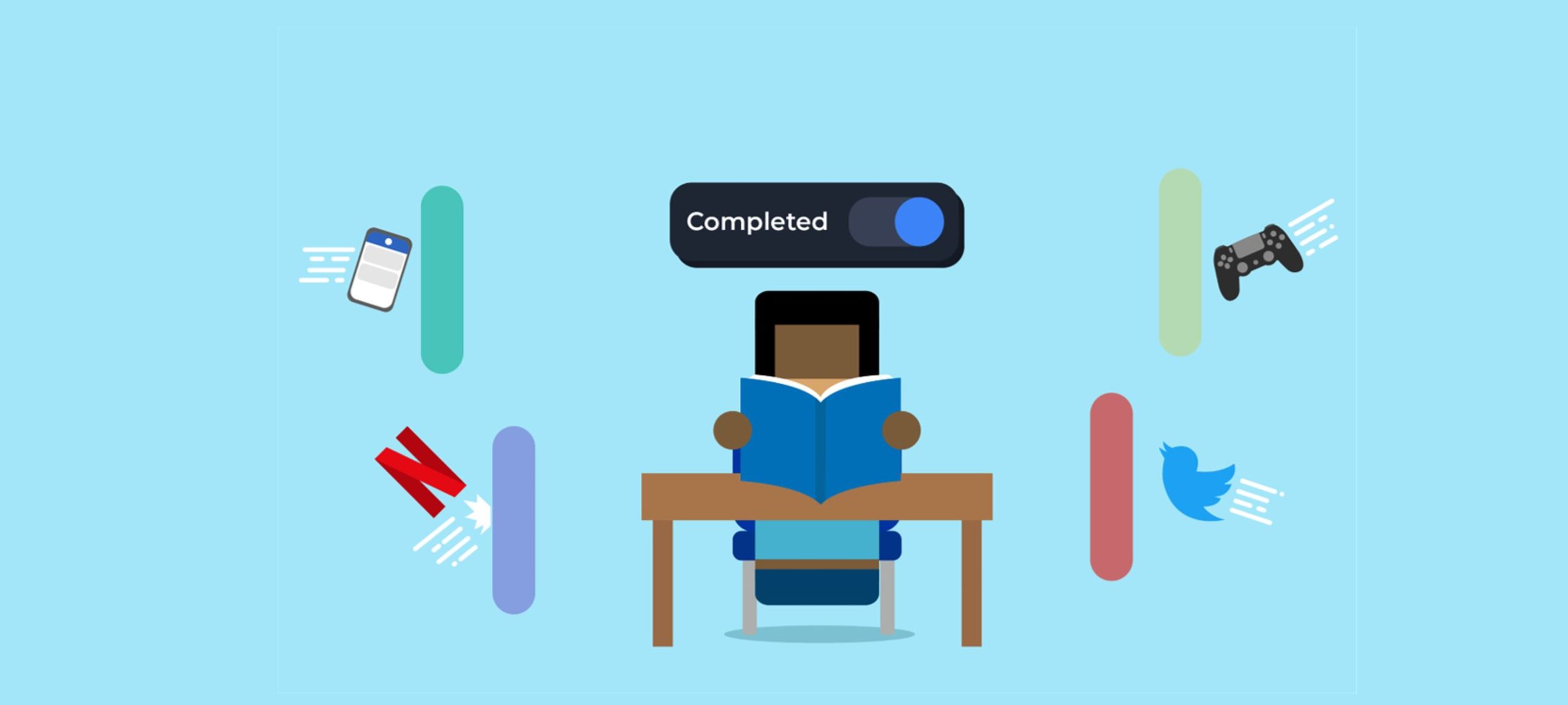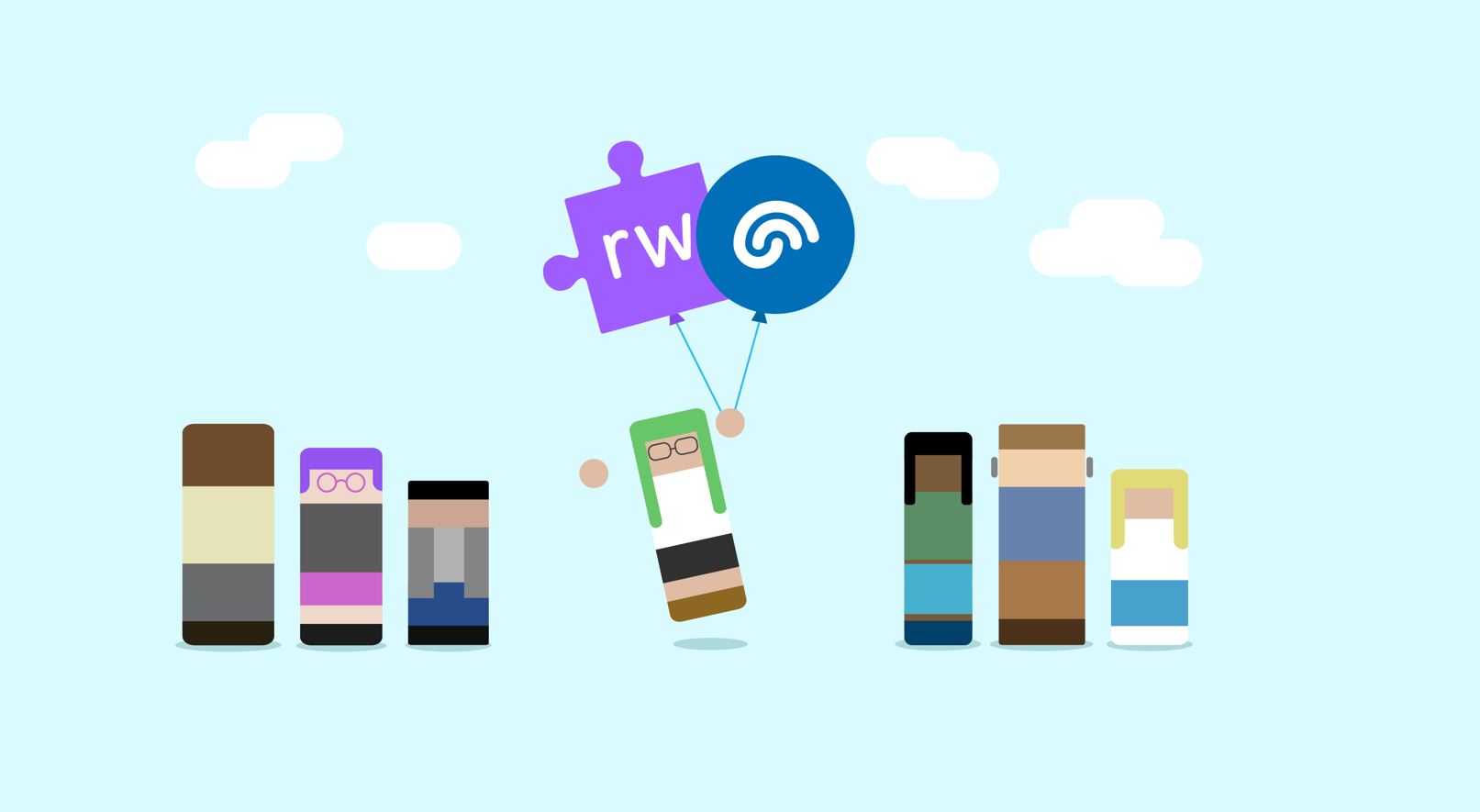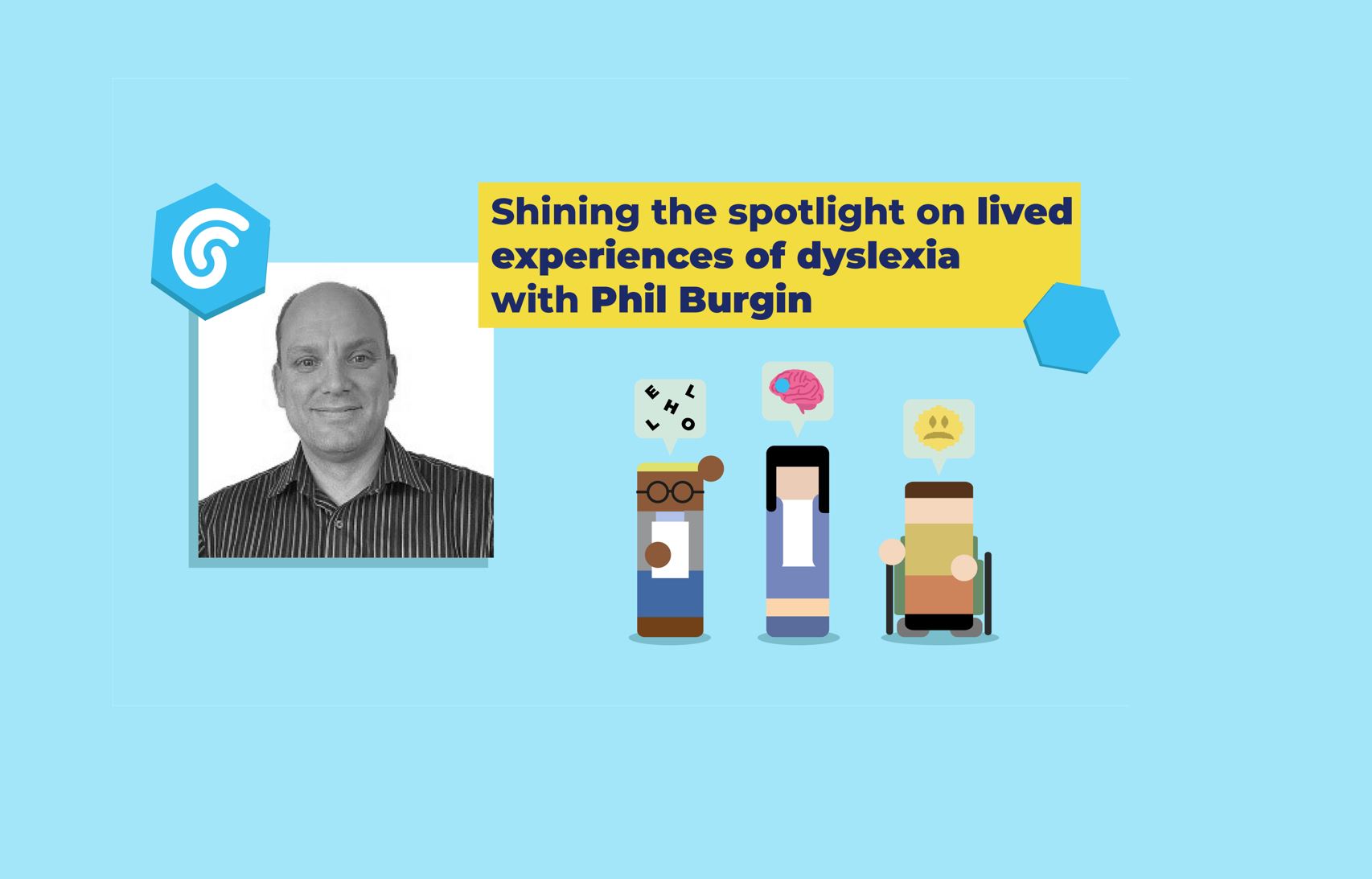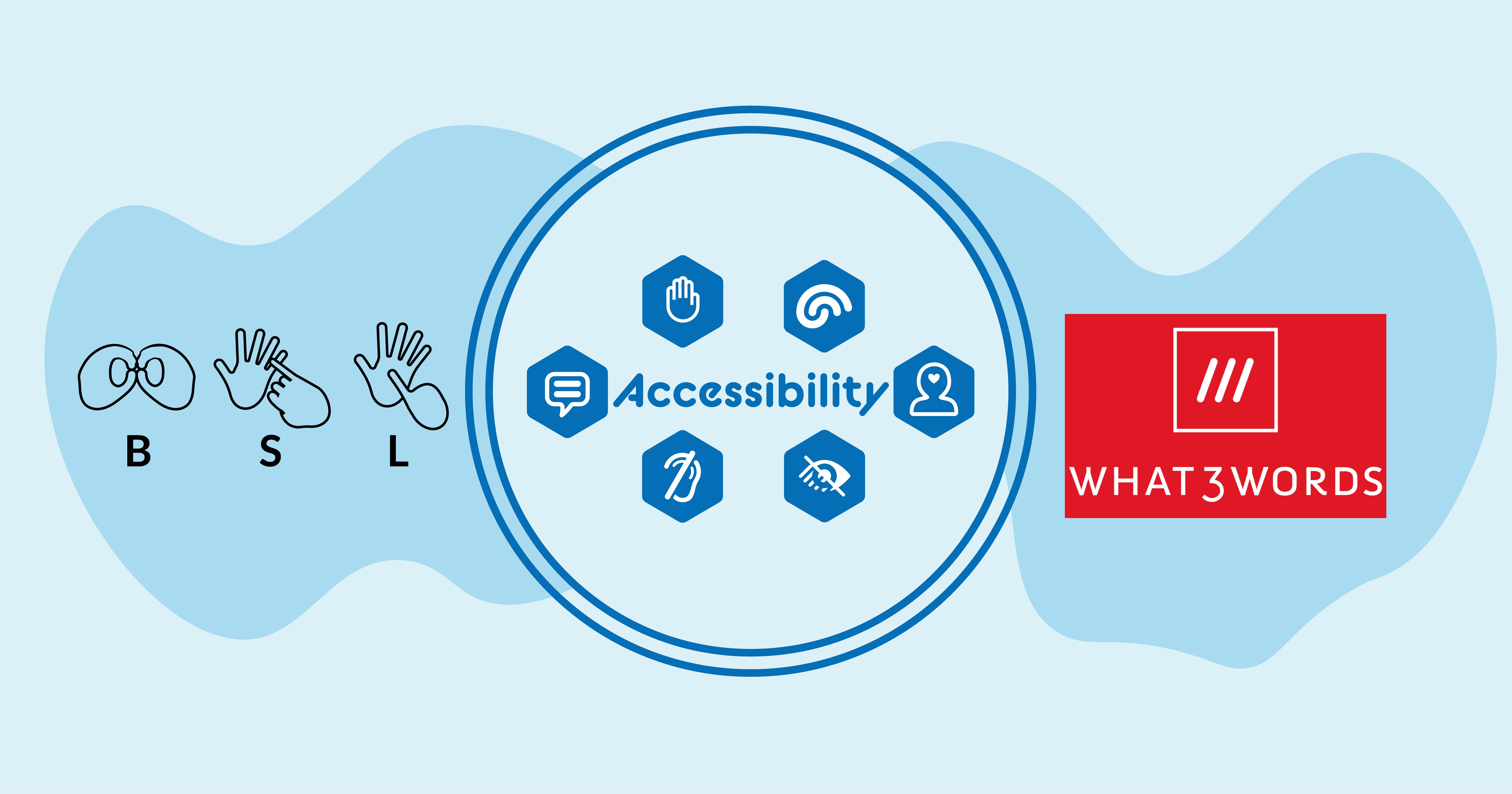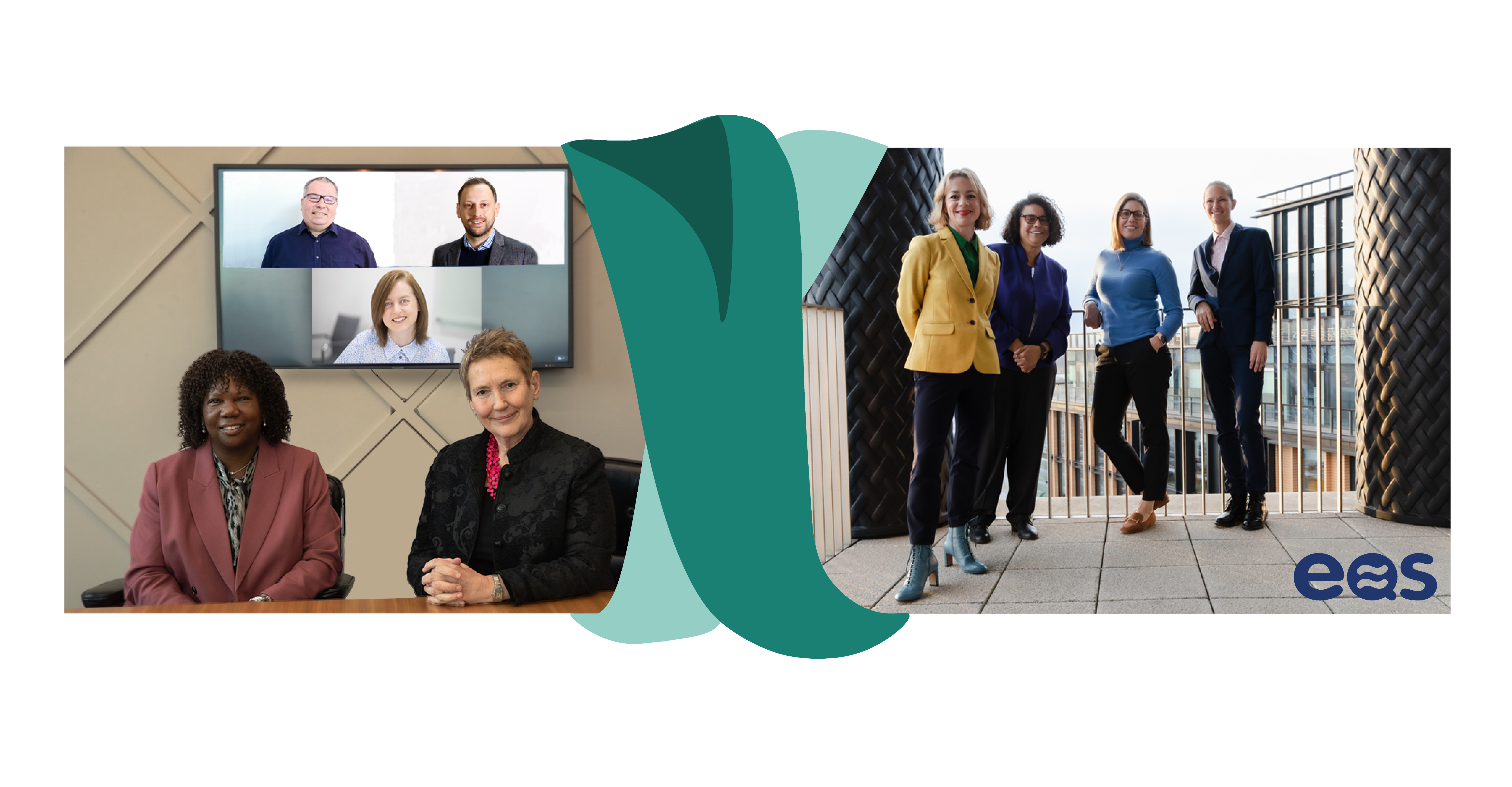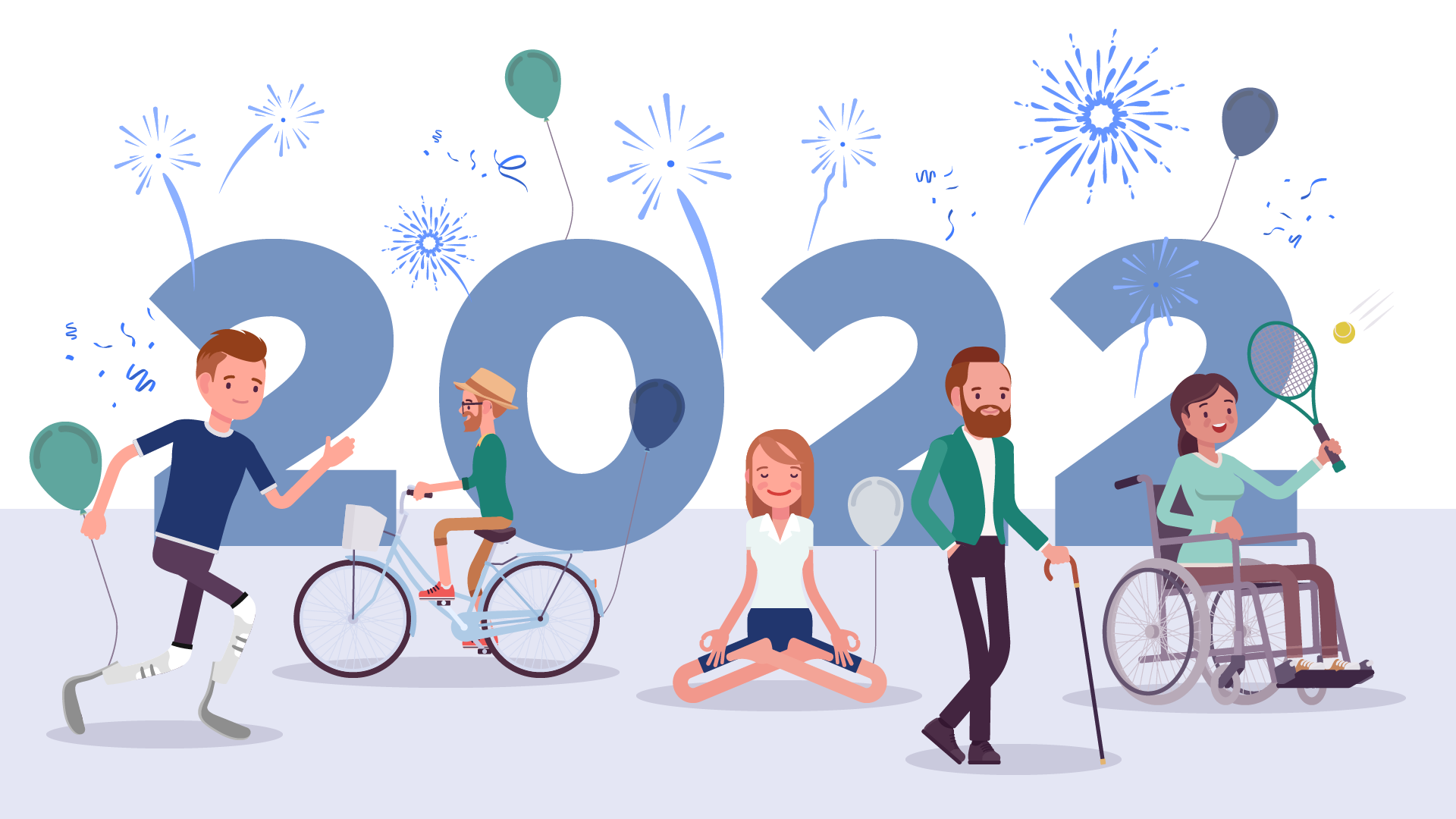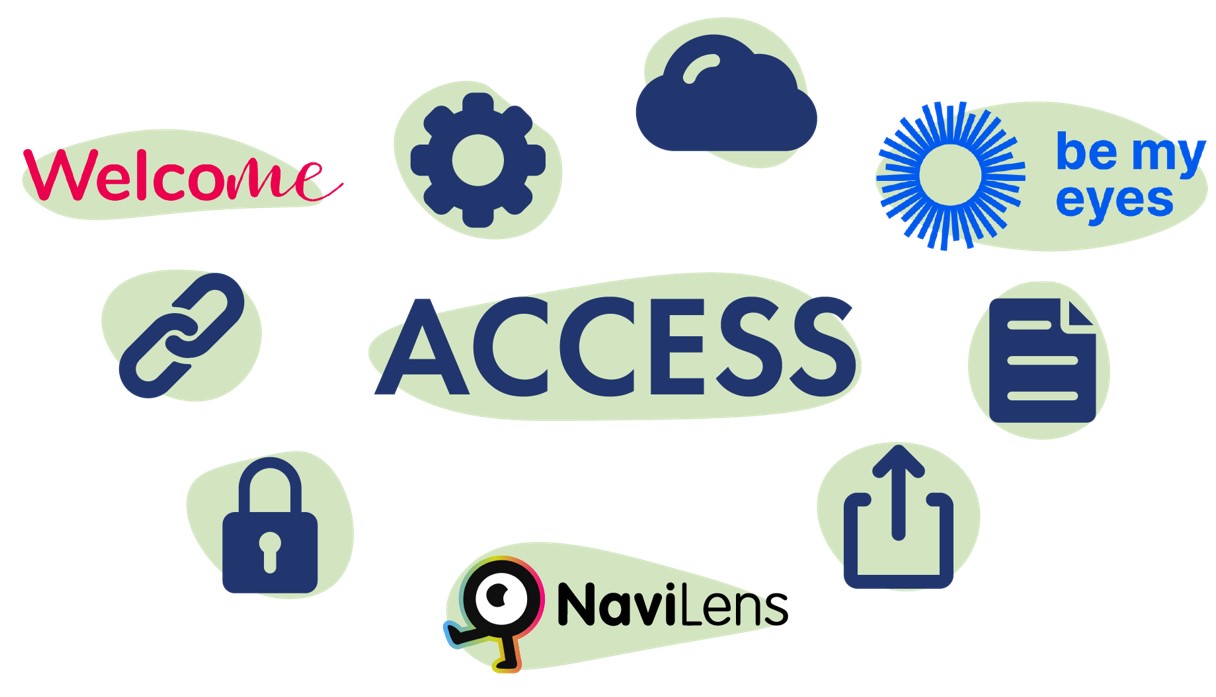Learning Labs and Global AutoCorrect joint webinar
Keeping students focused when they need it most
Other blog articles
Keeping students focused when they need it most
Other blog articles
Shining the spotlight on lived experiences of dyslexia with Phil Burgin
Other blog articles
Shining the spotlight on lived experiences of dyslexia with Phil Burgin
Other blog articles
This month sees the 13th annual Global Accessibility Awareness Day (GAAD) take place. It’s fantastic that we have a dedicated day to accessibility. It gets people talking about and acting on accessibility. However, with approximately one billion people or 15% of the world’s population experiencing some form of disability, it’s important to not let the momentum slide and ensure you have 365 days a year dedicated to accessibility. That’s why this month I wanted to take a look at what’s been happening since last year’s GAAD so we can see how far we’ve come in 12 months and what could happen before GAAD 2023.
Sharing accessibility resources
At the end of last year tooltester conducted a study which looked at 200 of the most popular websites across the globe and ranked them on their accessibility. There was a mixed bag of results. H&M was the most accessible site with just 0.38% of the site begin inaccessible. Amazon came in second with just 0.72% of their site showing as inaccessible. At the other end of the scale was ASOS with almost a quarter (21%) of their site being inaccessible. ASOS responded to the report by saying:
“We want everyone to be able to confidently shop at ASOS. We take issues of accessibility incredibly seriously and regularly conduct full audits of our websites and apps to ensure we account for everyone’s unique needs and experiences.
“Since our last audit, we have made a number of changes, including adding alternative text to images, sound and captions on product videos and improved adaptability for keyboard-only users.
“However, we know there are always ways we can do better so we will review the report in detail and assess any further improvements to ensure the ASOS experience remains as inclusive as possible.”
Studies like this are important as not only does it alert companies to their accessibility errors but it also enables them to see what is being done by companies succeeding in accessibility thus supporting them on making their website as accessible as possible. This study prompted ASOS to put accessibility in the forefront of their long-term development plan, not just for one day.
While I was researching this blog I came across a handy tool which gives you an insight into how many people who visit your website may have a disability, just by putting in the number of visitors your website has. For example, if a website has 1,000 visitors 160 of those visitors could be deaf or hard of hearing, 90 could be dyslexic and 10 could be autistic. Find out the stats of your website by clicking here.
Tweeting in an #AccessibleWay
Twitter has recently highlighted how accessibility is an ongoing commitment. For a while twitter has enabled users to add alt text to their images. This is text that describes the image which ensures individuals using a screen reader or speech-to-text programs can get the full context of your tweet. However, twitter has recently took this feature a step further by adding an ‘ALT’ badge in the corner of images that contain alt text. Prior to this, if you retweeted someone else’s tweets, you would not know if that content was accessible or not. Having the ‘ALT’ badge clearly on display also prompts users to find out more about the feature and hopefully make their tweets more accessible.
Accessibility away from the computer
Although it’s believed that the UK spends on average 6.4 hours a day in front of a screen, when it comes to accessibility, it’s important not to forget the offline world. The recent ‘Accessibility in Hospitality’ survey found that 71% of customers want more to be done to address the lack of accessibility in the hospitality industry. The survey was completed by a large database of people with and without a disability aged 18 to 66+. The results showed, while 58% felt hotels adhered to disabled people’s needs, only 16% felt leisure facilities were accessible with restaurants scoring 14%, pubs 7% and quick services just 5%. So what can be done to improve these stats over the next 12 months?
Communicating important changes
Last year London Euston train station became the first train station in the UK to provide the latest passenger information using British Sign Language (BSL). Anyone who’s travelled by train will know things don’t always go to plan. That’s why London Euston has a team of BSL interpreters on call ready to create content during periods of unexpected disruptions, reducing stress and anxiety for the 87,000 people in the UK who have BSL as their preferred language.
You may have seen Learning Labs posting a monthly BSL word on our social media to encourage more people to learn the language. Already this year I’ve learnt how to sign ‘I love you’ and ‘pancake’. Below is a really useful travel related BSL video to help increase your vocabulary further.
Improving accessibility with three little words
Visiting a new location can be a daunting experience. You are faced with many unknowns. What’s the best route to take? Will the building be easy to find? How will I know which entrance to use? Even if you do extensive research via Google maps you’re not guaranteed to find the answers to all your questions due to street addresses not always taking you to the correct location and many rural places and parks not having an address at all. That’s where navigation app what3words can help. What3words has split the entire world into three metre squares and given each square a unique combination of three words, making it easier to find and share exact locations. This in turn can help remove these feelings of anxiety you may get from visiting a new location as well as improving a locations accessibility. For example if you wanted to navigate to the gates of Buckingham Palace you navigate go to worked.view.broke. To get to the Sydney Opera House you’d navigate to frost.fight.author.
Our head office in Hebburn has two entrances. One which leads to the main office and one which takes you directly to our warehouse. To find our main office entrance you would need to navigate to rust.status.fists. To visit our warehouse you would need to navigate to answers.elsewhere.rotations. We have clear signage at our head office but what if you have a visual impairment or you don’t read English? I’ve certainly seen what3words increase in popularity over the last 12 months. Just the other day I received a flyer through the post advertising my local Go Outdoors store. On the flyer next to the store address and map was the what3words address. What3words is making the world more accessible three metres squared at a time.
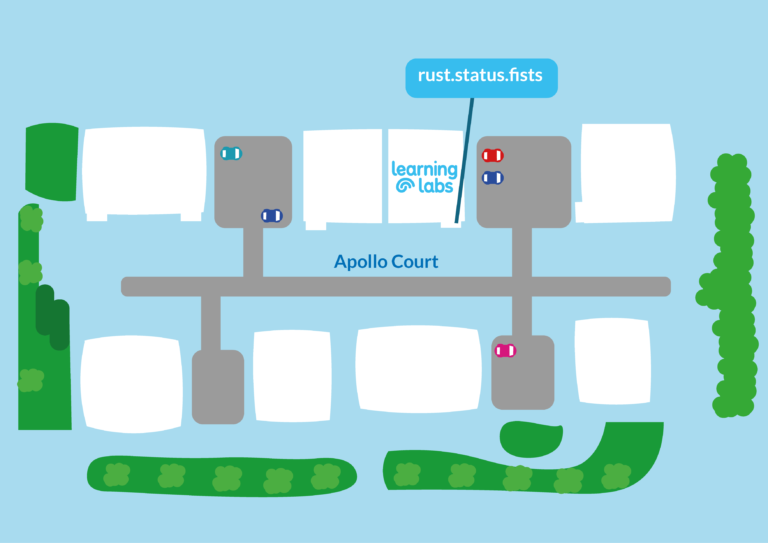
Over to you
I’d love to hear from you about any accessibility
initiatives or processes you have seen. Through sharing knowledge and using
accessibility initiatives all year round I believe we can build on the
foundations GAAD gives us, ensuring accessibility is for life not just for
Global Accessibility Day.
Other blog articles
Learning Labs’ Strategic Relationship Manager, Michelle Brown, recently wrote a guest blog for assistive technology, training and support provider, Dyslexia Box.
Back in 1994 the Access to Work programme was set up with the aim of helping individuals with a physical or mental health condition or disability get or stay in work. During the 2020 to 2021 financial year 37,170 people were in receipt of Access to Work payments. However, of those 37,170 only 10% were aged 25-29 and just under 10% were aged 18-24, the age groups that are most likely to be transitioning from education to work. Could the numbers within these age groups have the potential to be higher? Are there people entitled to Access to Work who are missing out and therefore encountering unnecessary barriers within the world of work? That is what e-learning portal Learning Labs and the All-Parliamentary Party Group for Assistive Technology (APPGAT) recently set out to answer.
What is student’s understanding of Access to Work?
Earlier this year Learning Labs and APPGAT teamed up to learn what student’s understanding and experience of Access to Work was. Learning Labs sent a 25-question survey to its students that had claimed Disability Student’s Allowance during their time at university and were now in their final year of study and therefore likely to be applying for Access to Work in the near future. The survey was completed by 371 students. The most notable finding from the survey was that 80% of students had never heard of Access to Work. As a reminder, these are students that are in their final year of studies and will therefore be entering the world of work very soon.
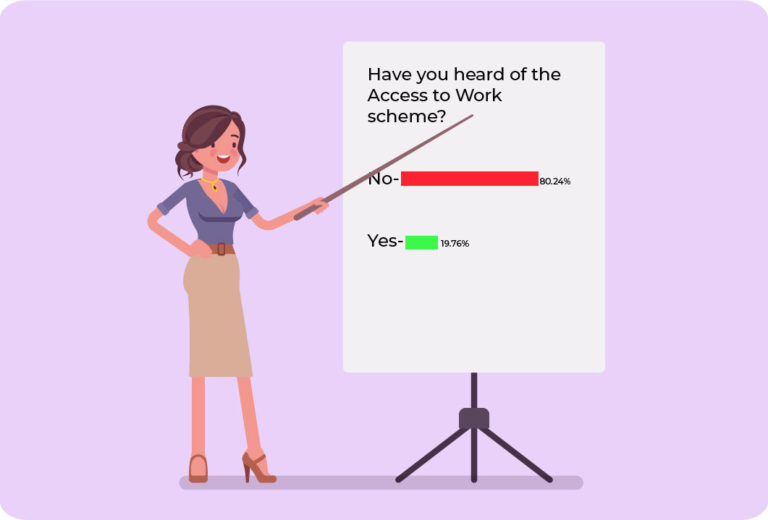
When asked if their university provided them with any information about disability support in the workplace (for your post-graduation career) 66% of respondents said no. This explains why, out of the 19% of students who had heard of Access to Work, 33% of them had discovered it by conducting their own research.
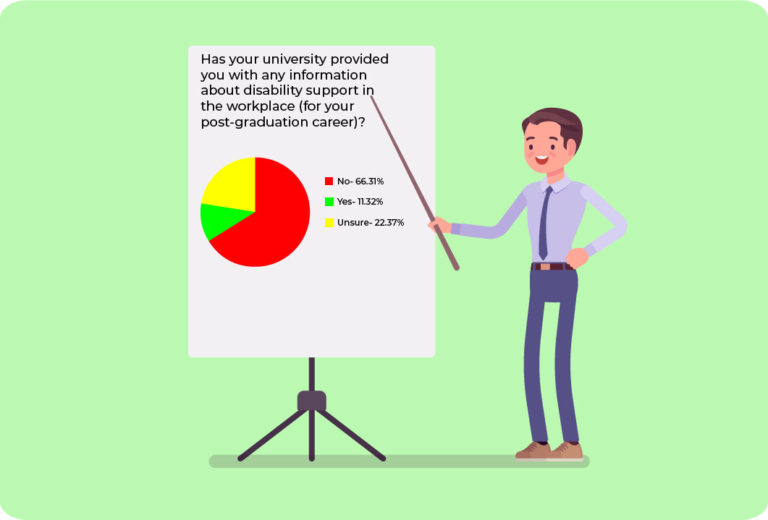
It is therefore important that conversations about Access to Work take place before, during and after a job search to ensure as many individuals as possible benefit from the programme. To enable this joined up process to take place everyone from university Careers Advisors to DSA Needs Assessors to employers need to be aware of, and championing Access to Work.
40% of survey respondents said they would consider turning down a job offer/leaving a job if they did not receive the appropriate support for their needs. It’s therefore important that any support continues throughout their career.
With a Learning Labs account employees receive access to over 4,000 Labs. Each Lab guides them through how to use a particular Assistive Technology software from SuperNova Magnifier and Screen Reader to Spellex Write-Assist. With remote working increasing in popularity there are also Labs on useful software such as Microsoft Teams and Zoom. As everyone has a different learning style all Labs are available as a Do, Watch or Read Lab with Quiz Labs providing a fun way to challenge yourself once you’ve completed all the Labs for that particular software.
The good news is initiatives have already been announced to try and bridge the gap between education and the workplace for people with a disability. At the beginning of December, as part of their National Disability Strategy, the government announced a new pilot ‘passport’ scheme to complement the existing Access to Work grant scheme.
The passport will contain all the necessary medical information, adjustments and benefits a graduate already receives. This will prevent them from having to undergo repeated health assessments and repetitive disclosures that are part of the job and grant application process. The passport also aims to empower the graduates and grow their confidence around having the conversations about their disabilities with potential employers.
With any effective conversation though it should not be one-sided. It’s important that everyone the student encounters along their journey to employment, from DSA Needs Assessors to Career Advisors and even employers are aware of and having open discussions about Access to Work.
Hopefully with these conversations taking place, and these new initiatives from the government, when Learning Labs and APPGAT repeat the survey over the coming years we will see the statistics flip and 80%, if not 100%, of students will HAVE heard of Access to Work.
Other blog articles
Leading Diversity, Equity & Inclusion (DEI) specialist eQuality Solutions Group (eQS) has acquired Challenge, a London-based DEI training and consultancy business in a seven-figure deal as part of its ‘buy and build’ strategy. The move accelerates eQS’ goal to become the leading UK’s provider of DEI solutions and further solidifies its target of achieving £30m turnover by 2023.
Founded in 1988 by Femi Otitoju, Challenge Consultancy has a formidable and successful reputation in DEI, having delivered dynamic, transformational training on the global stage across four decades. Challenge Consultancy are pioneers in creating positive change in the private, public and education sectors.
Speaking on the business, Andy Gough, eQS CEO, commented “Challenge has an outstanding reputation in the field of diversity, equity and inclusion and has done incredible work to influence positive change in the workplace.”
This is the fourth acquisition in the last 12 months for the North-East headquartered Group which will see Challenge Consultancy’s 41 employees and consultants join forces with recently acquired EW Group, cementing eQS’ position as a leader in providing DEI solutions in the workplace. Femi will move to a founder role within the business alongside Jane Farrell, EW Group founder. The resulting DEI Division will be led going forward by EW Group’s current MD, Rachael Wilson.
Speaking of the acquisition, eQS’ CFO, Michael Hall, said: “The global DEI market is forecast to reach £6billion in the next 5 years and the acquisition of Challenge Consultancy is an important milestone for the group, instantly doubling the size of our DEI division and making eQS one of the largest independent players in the UK. The addition of Challenge Consultancy will see eQS’ revenues exceed £15 million and the accumulation of talent reinforces our ability to deliver industry-changing DEI strategies across multiple sectors and geographies”
On how it felt when the teams first met, Andy went on to say “there was an instant synergy and alignment of culture and values between the businesses. Through this acquisition we are perfectly placed to deliver a full suite of evidence-based DEI solutions across our three key verticals of education, business and government and adapt to the ever-changing needs of these sectors.”
Commenting on the acquisition, Femi explained: “The deal with eQS was perfect timing. Andy, Rachael, Michael and the leadership team at eQS are passionate about influencing positive change within the world and their ambition to be the leading global provider in DEI strategies and to make the world a more inclusive place, really stood out. eQS has a proven track record in delivering industry-leading disability solutions and we have always seen EW Group as a like-minded pioneer in DEI. I am confident that the market will respond positively to the combination of two of the strongest players in the sector, and to the greater capacity and expertise the wider Group will now offer.”
Femi went on to explain more about the business “The Challenge Consultancy team all identify as Black, Asian or Minority ethnic or LGBTQ+ or as disabled people – resulting in all trainers and consultants bringing direct, lived experience of diversity and equity issues. Most of us are also active in our communities, as volunteers, board members and campaigners and we bring the same passion that inspires us in these areas to the work we do with Challenge Consultancy. Our training is both challenging and fun. We have an established global client base – many of whom have been clients for more than 10 years. Our track record demonstrates the change we have created in multiple sectors including higher education, media and both public and private sectors.”
Confident that this new strategic partnership will deliver success, Rachael Wilson, MD of eQS’ DEI Division, explains: “The two organisations are leaders in the DEI space, with a combined heritage of 64 years as specialists. Together, our depth and breadth of expertise covers every industry and sector. The extent of our combined experience means we are able to respond to societal and workplace shifts, and to be leading on DEI concepts. The coming together of these two organisations creates a truly full-service diversity consultancy, with the capacity to operate at scale. Our combined team of experts numbers over 100 people.”
Advising eQS on their 4th acquisition was Corporate Finance Partner Carl Swansbury and Corporate Finance Director Rhiannon Nightingale of RG Corporate Finance, whilst financial and tax due diligence was carried out by RG’s Partner, Grahame Maughan, supported by Andrew Cameron and Jonathan Delaney.
Legal advice to eQS on the acquisition was provided by Corporate Partner Tom Pollard and Corporate Solicitor Liam Stubbs of Ward Hadaway LLP.
Sofia Jørgensen, Corporate Partner at law firm Gunnercooke LLP provided legal advice to Femi Otitoju.
RG Corporate Finance Director Rhiannon Nightingale said: “eQS’ latest acquisition enables the Group to expand its service proposition and geographical reach through the strategic acquisition of London-based Challenge Consultancy. This transaction brings together two market leaders in EW Group and Challenge Consultancy and enables eQS to achieve their goal of being the leading provider of DEI solutions in the UK.”
In December 2020, eQS secured a £20m funding package, with £12m committed along with a £8m accordion from Shard Credit Partners which has fuelled eQS’ recent spate of M&A activity as part of its ‘buy and build’ strategy. Further acquisitions are in the pipeline during 2022.
The latest acquisition of Challenge Consultancy follows hot on the heels of a series of recent acquisitions – including the purchases of South West-based Amano, as well as the acquisition of EW Group and The Educational Guidance Service (EGS).
Other blog articles
New year, new you?
A recent survey found that 40% of UK adults planned to make a New Year’s resolution. Were you one of the 40%? Have you already broken your New Year’s resolution or did you not bother making one? After recently speaking with a meditation partitioner my resolution is to make sure I take time out for myself and to try meditation. I also want to try new things and get out of my comfort zone. That’s why, even as someone who absolutely hates heights, I have signed up for an indoor climbing class.
Year on year one of the most popular New Year’s resolutions is related to physical wellbeing such as exercising more, joining a gym or just getting out more, for example a daily walk. The benefits of exercise and getting outside are well documented. Recent research has found that low-intensity aerobic exercise for 30-35 minutes three to five times a week for 10-12 weeks is an effective way of increasing positive moods, for example enthusiasm and alertness. At Learning Labs we feel so strongly about the benefits of physical activity on your mental health that one of our Six Domains of Mental WellnessTM is literally called the Physical domain. Within this domain users can assess their own physical mental wellness as well as learn how physical activity helps their mental wellness and discover tools to develop their physical mental wellness.
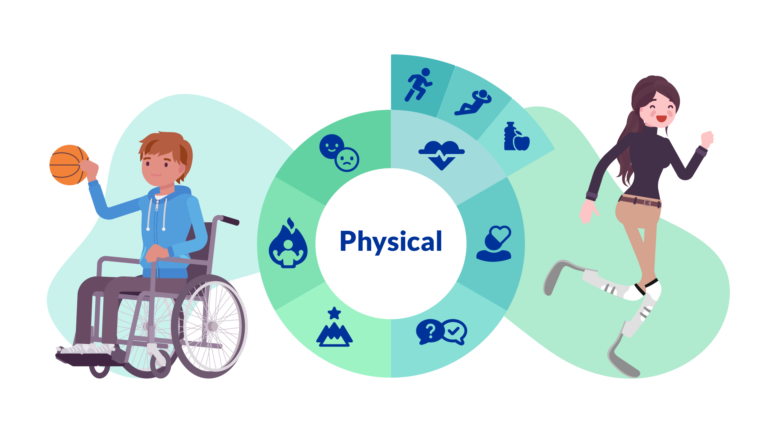
However, if you have a disability there can be barriers in place that prevent you from exercising when and/or as often as you like. A recent study found 78% of disabled people would like to be more active. That’s why, for this month’s blog, I would like to highlight three new pieces of assistive technology that could provide independence and help individuals enjoy the physical and mental benefits that come with exercising.
Socially distanced guiding
I first learnt about the companion cane during our CPD Rev TV series last year when our keynote address was by celebrity adventurer, entrepreneur and TV presenter, Amar Latif. Inspired by the challenges people with a visual impairment had encountered during the pandemic, Amar wanted to create a cane that enabled users to be guided whilst also social distancing. The companion cane is a horizontal cane design, with handles on each end, that extends from 1-metre to 1.5-metres. Users can safely walk either by the side of their guide or, if there is limited room, behind them without having to have physical contact.
Once social distancing is a thing of the past the companion cane will still be useful. By having horizontal extendable arms, the cane provides independence for the user as they can be assisted without a guide being by their side. As Amar says in the promotional video for the companion cane, which is available in full below, “sometimes you just need a bit of space”.
Nod and go
The recently developed munevo DRIVE is empowering wheelchair users who cannot use their hands to experience the great outdoors independently, without the reliance of someone having to help them manoeuvre their wheelchair.
The user wears a pair of smart glasses, which look near enough like any other pair of glasses. The glasses use built in sensors to translate head movements into control signals. The signals are then received, via Bluetooth, by an adapter attached to the electric wheelchair. The munevo DRIVE doesn’t just control wheelchairs. The smart glasses can also control smart home systems, smartphones and computers.
The developers of the munevo DRIVE are aware that not only are we all individual but our abilities and requirements will change over time. That’s why the munevo DRIVE includes a 20 second function which enables users to readjust the system depending on their sitting position, daily form or even the weather. You can check out the munevo DRIVE in action via the video below.
Hands-free footwear
A recent study asked people to rate their mood immediately after periods of physical activity (e.g. going for a walk or doing housework), and periods of inactivity (e.g. reading a book or watching television). The study found that participants felt more content, awake and calmer after being physically active compared to after periods of inactivity. Nike has recently enabled more people the option to exercise independently with the release of their Nike Go FlyEase trainer.
The Nike Go FlyEase trainer has an innovative design which enables it to be worn without the use of hands or laces. The trainer has a tension band that snaps into place when a foot is placed inside. To take the trainer off all you need to do is step on the heel to release the tension.
Nike were inspired to design the trainer after 16-year-old Matthew Walzer, who has cerebral palsy, emailed them explaining how he, and millions of people across the world, struggle to put on footwear. In his email Matthew wrote ‘At 16 years old, I am able to completely dress myself, but my parents still have to tie my shoes. As a teenager who is striving to become totally self-sufficient, I find this extremely frustrating, and at times, embarrassing.’ When the hands-free trainer was released Nike stated ‘this translates to serving the broadest range of active lifestyles possible — whether the wearer is champion fencer Bebe Vio, a student racing to class or a parent with their hands full.’
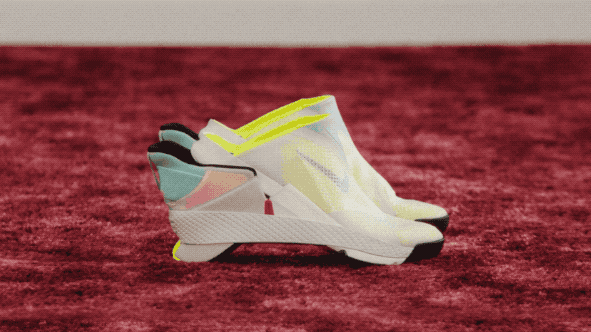
What do you think?
I’d love to hear from you if there are any other examples of newly released AT that you think should have made it on to my list. You can let me know via the comments below. I’m also interested to hear if you have set yourself a particular challenge as a New Year’s resolution? Maybe you plan to run a marathon for the first time in 2022.
Feel free to message me also if you would like to know more about our mental wellness portal and our Physical domain of mental wellness or any of our Six Domains of Mental WellnessTM.
Other blog articles
With a new Christmas advert launching almost every day recently it is safe to say the festive period has well and truly begun. Whether you have Christmas shopping down to a fine art purchasing presents throughout the year or, like me, do your Christmas shopping online in bed with a cuppa, chances are you’ll find yourself purchasing some gifts on the high street or online in the coming weeks.
After a subdued festive period, last year, advertisers are expected to spend almost £1bn more marketing their products this year. That budget will cover an array of things from filming adverts to promoting those adverts online and even targeting specific groups of shoppers. There’s an array of terms allocated to different groups of shoppers and their purchasing powers. The pink pound refers to the purchasing power of the LGBTQA community and the purchasing power of elderly consumers is referred to as the grey pound. As someone who works within the DSA sector I have a particular interest in what initiatives are available, all year round not just at Christmas, to make shopping more accessible for the purple pound, the purchasing power of people with a disability.
Learning a new language
Earlier this month the fourth annual Purple Tuesday took place. Through their six commitments Purple Tuesday aims to engage with organisations across all industries and of all sizes to promote understanding, put in place the right solutions, and equip staff to provide a quality customer experience 365 days a year.
One of Purple Tuesday’s commitments is ‘learning British Sign Language’ which encourages organisations to train their staff on key words and phrases in British Sign Language to enable basic conversations with customers who use this as their main form of communication. It was while I was researching for this blog that I found out British Sign Language (BSL) is the preferred language of over 87,000 Deaf people in the UK yet only 10% of people in the UK know more than two words in BSL. To help increase this number, starting from next month, Learning Labs will be regularly posting a BSL phrase on our social media channels and encouraging staff and our followers to learn the phrase. With just one phrase we’ll have learnt more words in BSL than what 90% of the UK population know. To kick things off below is how you can say ‘hello, how are you?’ in BSL.
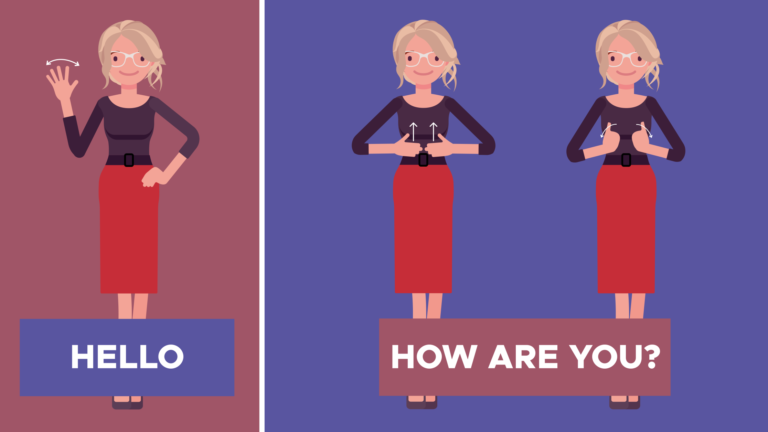
Quiet hours
Quiet hours in supermarkets are becoming more commonplace. During these times lights are dimmed and checkout noises are lowered to prevent shoppers with autism feeling overwhelmed. Tesco stores in Scotland recently announced it is making its quiet hours, which take place every Wednesday and Saturday between 9am and 10am, a permanent fixture across all its larger stores. Earlier this year the high street toy shop, The Entertainer, announced its quiet hour will be extended to run every day for the first hour of opening in all of its 171 stores. These are great initiatives and definitely a step in the right direction. However, for initiatives like this to be effective, it’s important that all staff get appropriate training so they know why the initiative is taking place and what else they can do to help the people the initiative is aimed at. This is highlighted further by Purple Tuesday’s commitment of ‘provide customer training’. Through face-to-face, online or blended forms of training staff can feel empowered to confidently communicate with a person with a disability without fear of unintentionally offending them.
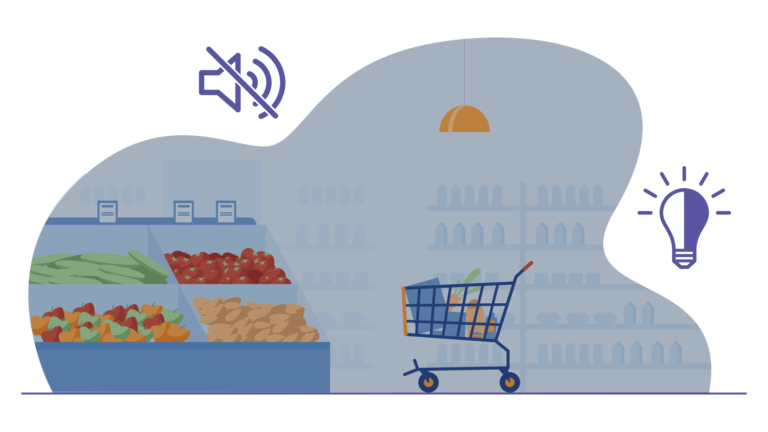
I saw a great example of this joined up working a few weeks ago on twitter. An Arsenal fan tweeted about their experience of taking their son who has autism to a football match. His son found the atmosphere overwhelming and wanted to leave. As they were leaving a steward made them aware of a sensory room where they could watch the rest of the match from. Rightly so, the tweet went viral gaining over 80,000 likes and 12,000 retweets.
I touched on this topic in my previous blog where I spoke about the app WelcomeMe. The app enables users to set up a unique profile where they can list factors such as their access needs and support they may require. When the user selects a business that is also using the app the business receives the information from the user’s profile as well as advice linked to the information the user has inputted e.g. how to interact with a guide dog.
Whether your business is customer facing or not it is still important that all your staff feel confident and aware when discussing disability in the workplace and everyday life. That’s why we ensure all our staff complete our disability confidence course during their induction period. We also offer this course to external businesses. Please drop me a message if you’d like to talk more about our disability confidence course and the possibility of offering it to your workforce.
Online marketplaces
It’s important that digital marketplaces are just as, if not more, accessible to the purple pound. It’s not surprising with the various lockdowns that took place, last year saw online retail sales increase by 36% which amounted to approximately £243 billion. If a physical shop has their front door locked during trading hours you’ll simply shop elsewhere. But what if you visit several shops and all of them have no way of purchasing what they are selling or even seeing what they are selling? This unfortunately is the scenario many people with a disability find themselves in every day when they try to shop online. Research from the Click Away Pound Report, which covers the accessibility of online shopping, found that nearly 70% of shoppers with accessibility issues leave an e-commerce site due to poor accessibility. So how can we make online shopping more accessible?
According to WebAIM’s latest Screen Reader survey which was completed by over 1,000 users who regularly use screen readers, 60% feel the accessibility of web content has either not changed or actually got worse over the past year. Over 70% believe this is due to a lack of awareness or skills around web accessibility. This highlights the importance of everyone, customer facing or not, being confident and aware when discussing disabilities. Earlier this year National Rail and Network Rail websites switched their design to black and white as a mark of respect following the death of Prince Phillip. This was a touching tribute but, due to the lack of contrast between the colours used, meant the site was unusable for many users who had a visual impairment.
National Days are a great way to highlight a particular issue. Every year Global Accessibility Awareness Day takes place with the aim of getting everyone talking, thinking and learning about digital access and inclusion. However, it’s important that we think about digital access and inclusion all year round.
So how can you ensure your website is accessible? One word. Testing. There are numerous companies out there that will look through your website and highlight the accessible issues you have. Some will be a quick fix whereas others may take longer to implement. This is a process that we have been through ourselves at Learning Labs.
What do you think?
A recent survey found that less than 10% of organisations have a targeted plan to access the disability market. With the purple pound spending power estimated to rise 14% per year this feels like a missed opportunity for consumers who have a disability and businesses that should be serving them, especially when something as easy as a website audit or learning some useful British Sign Language phrases could make a significant impact almost straight away. Imagine what we could achieve if our new year’s resolution was to make our website/store more accessible.
As always, I’d love to hear from you. Have you seen any other initiatives that are making shopping more accessible? Maybe you know of some websites that are doing accessibility really well.
Other blog articles
After the false start to 2020’s sporting calendar one thing I’ve enjoyed this summer is the return of sporting events such as Wimbledon, the Euros and, of course, the Summer Olympic and Paralympic games. Athletes had to learn to navigate disrupted training due to the pandemic with swimming pools, gyms and cycle tracks closing for unknown amounts of time, it was fantastic to see the athletes doing what they do best, often in front of a global audience.
The most important take-away that we gained from the 2021 summer of sport has to be the open discussion around mental health amongst the athletes and how this is just as important as their physical health. US gymnast, Simone Biles, pulled out of the Olympic all-round final to prioritise her mental health, Japanese tennis player, Naomi Osaka, withdrew from the French Open earlier in the year and decided not to compete in Wimbledon to preserve her mental health. In July England cricketer, Ben Stokes, decided to take an indefinite break from all cricket with immediate effect to prioritise his mental wellbeing.
At Learning Labs we are lucky enough to have access to a mental wellness portal which enables us to learn about mental wellness then assess and develop our own mental wellness. The portal is based on our very own unique concept called the Six Domain of Mental WellnessTM. It was while I was seeing the coverage of athletes opening up about their mental wellness that I realised I was seeing real-life examples of, at least, two of our six domains in action.
Your Social Wellness Domain in action
One of the drivers behind the social mental wellness domain is community. Having a community available to support you when you need it can have a positive impact on your mental wellbeing. During the pandemic, when many people were experiencing difficulties maintaining their mental wellness, communities came together to help each other whether that be checking on people living alone to prevent feeling lonely or shopping for elderly or shielding neighbours. When she was unable to train due to gym closures, Canadian Paralympic wheelchair basketballer, Arinn Young’s, local community worked together to find weight room equipment and space for her to practice. However, a community is not limited to your immediate geographical community. It can be a community of people who share the same interest e.g. football fans, an online community such as a forum or Facebook group or people who share the same profession. During the pandemic many people’s perception of community would has changed. Due to lockdowns many people turned to the online world to find their community.
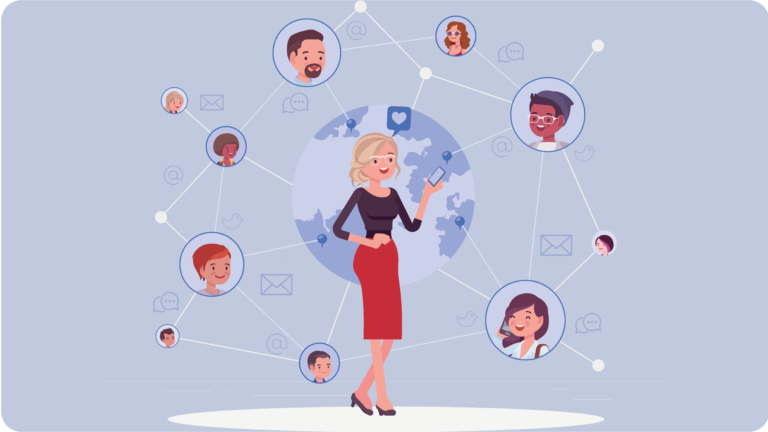
When Simone Biles announced her break to concentrate on her mental wellbeing she received an outpouring of support. Simone tweeted “the outpouring love & support I’ve received has made me realize I’m more than my accomplishments and gymnastics which I never truly believed before.” Via twitter, Simone was receiving support from her online community. People from all corners of the globe were helping her maintain her Social Wellness. She also received support from a different community, other professional athletes – people who shared her profession. Her fellow team USA gymnasts offered support as well as former Olympic figure skater, Adam Rippon, British gymnast Max Whitlock and Manchester United midfielder Paul Pogba, just to name a few.
Your Motivational Wellness domain in action
Autonomy is one of the drivers for the Motivational Wellness. This is the ability to act on personal values and interests and therefore feel in control of your behaviour and decision making. When Naomi Osaka made the decision to withdraw from the French Open she was doing just this. She was aware that press conferences were affecting her mental wellness so she acted on her personal values and interests and decided to remove herself, temporarily, from the situation. Over the last few months any interviews she has conducted with journalists have been via email. Earlier this year British Paralympic swimmer, Hannah Russel MBE, talked openly about her break in 2019 after she was diagnosed with anxiety and depression. She said “For me, taking out a little bit of time was really, really important for me and my mental health. I realised how much I missed my swimming”.
Within the Motivational Domain you can learn about intrinsic and extrinsic motivation. It goes into a lot more detail than this but in a nutshell extrinsic motivation focuses on behaviours driven by external rewards such as money or praise and intrinsic motivation focuses on behaviours driven by personal values and interests. It is safe to say that when Naomi decided to withdraw from the French Open she was acting on her intrinsic motivation as not only was her decision met by many unjust negative comments but she also got fined $15,000 by the heads of the French Open.
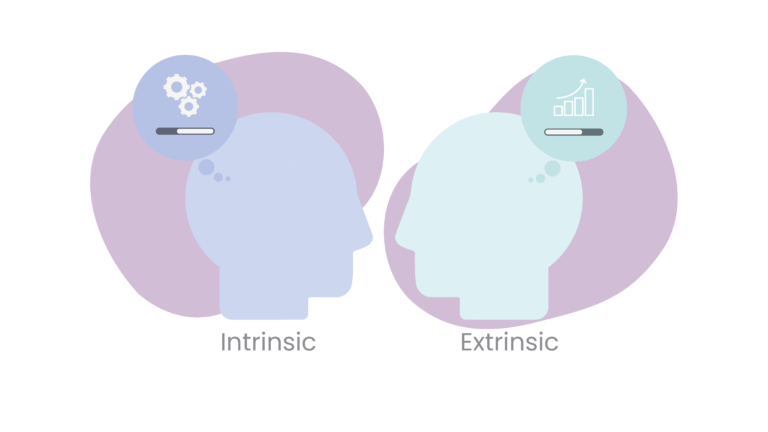
Naomi’s decision was driven by her intrinsic motivation, which in this instance outweighed the external motivation to compete. Occasionally we need to weight up the pros and cons of each motivator and follow the motivation that leads to the most positive outcome for our mental health.
What do you think?
A survey found that 40% of men won’t talk about their mental health so, the fact that male athletes like Ben Stokes, who has 964,200 followers on twitter, are putting conversations around their mental health into the mainstream is certainly a step forward. But where do we go next? Now that mental health conversations are taking place it’s important we act on these conversations and ensure mental wellness support is available from school through further and higher education and into the workplace and beyond. Only then will we see the topic of mental health truly normalised.
As always, I’d love to hear from you. Are there any other notable individuals you’ve seen recently speak out about their mental wellness – they don’t have to be a professional athlete. Also, do not hesitate to contact me if you’d like a demo of the new Learning Labs mental wellness portal to see how it could benefit your students, employees or future Olympians.
Other blog articles
Technology is frequently providing new and innovative solutions which make the world more accessible. However, it can feel like every day there is a new app, piece of software or website revealed. Working within the DSA sector I am aware that when it comes to widening accessibility in education and workplace universities are leading the way in inclusive learning strategy. It’s important to not get tunnel vision though and only concentrate on the sector you are working in. It’s important to look at what other accessible approaches are available from other sectors. That’s why for this month’s blog I’m discussing accessible approaches that may have passed you by due to them not being associated with the DSA and education sectors.
Making your weekly food shop more accessible
In the UK, there are almost 2 million people living with sight loss. Of these, around 360,000 are registered as blind or partially sighted. New accessible approaches are frequently being offered. Last month Guide Dogs committed to supplying more than 3,500 visually impaired children with free iPads and iPhones after research revealed the damage caused to their personal development by a lack of access to technology. Following a successful trial last year cereal brand, Kellogg’s, has announced they will be adding world-first NaviLens technology to all of their cereal boxes in 2022. NaviLens is a code, similar to a QR code, which can be scanned by a smartphone. The smartphone will then relay to the user the information that is held by the NaviLens code, in this case ingredients and allergy information. Unlike other types of printed codes the new NaviLens technology includes high contrasting-coloured squares on a black background. This means that users do not need to know exactly where the code is located to scan it. In fact, a smartphone can pick up the code from up to 3 metres away. After the initial trial earlier this year the Royal National Institute of Blind People (RNIB) conducted an evaluation which found that 97% of the participants agreed that they would like to see more of these accessibility features available on grocery packaging in the future.
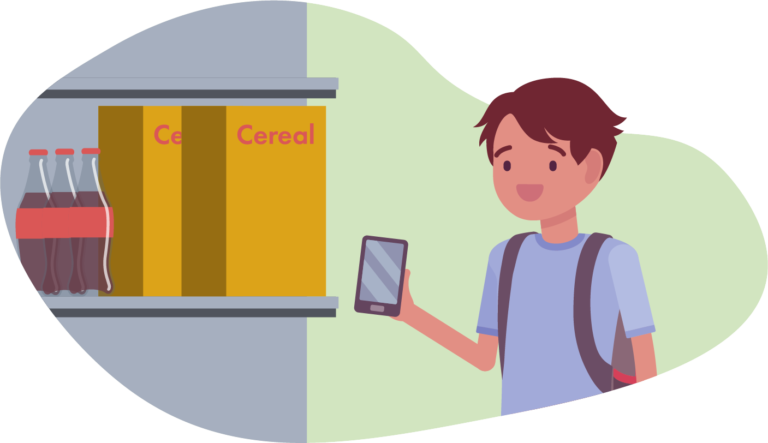
Research has shown that 75% of disabled people have had to leave a store or website, unable to go through with their purchase because of their disability. Last year, a survey by accessibility review website, Euan’s Guide, found that 93% of respondents try to find disabled access information before they visit somewhere new. WelcoME is an app which has recently launched. The app enables users to set up a unique profile where they can list factors such as their access needs and support they may require. Businesses also register on the app. Current businesses using the app include Scottish Parliament, Salford Leisure and Edinburgh branches of Next. When the user selects a business that is also using the app the business receives the information from the user’s profile as well as advice linked to the information the user has inputted e.g. how to interact with a guide dog. Businesses can ensure that any support such as a sighted guide are readily available enabling the visitor to immediately start their work out or shopping spree.
The app doesn’t just benefit that particular user. It benefits future users as well. By providing accessibility training that the business can then immediately put into practice staff are more confident for the next time that customer, or someone with a similar disability, visits.
Similar to the training offered by WelcoME, at eQS we ensure that all new members of staff complete our Disability Awareness Course which provides knowledge and facts about disability today from legislation to appropriate support. Please drop me a message if you’d like to talk more about our disability confidence course and the possibility of offering it to your workforce.
Helping with metre readings whilst being miles away.
My colleague Richard recently told me about Be My Eyes, an app he has downloaded which connects blind and low-vision people with a sighted volunteer. When a blind or low-vision user requires assistance the app will connect them to a sighted volunteer via a live video call. The sighted volunteer can answer the call or, if it’s not a convenient time, they can choose to ignore it and it will be picked up by another volunteer. As of last week, the app had 5,006,058 volunteers, of which I am now one, was supporting 322,892 blind and low-vision people in over 150 countries using over 180 languages.
A few days after downloading the app Richard received a call from someone needing help with an electricity metre reading. Richard said: “It felt really good to have helped someone and it only took a couple of minutes out of my day.”
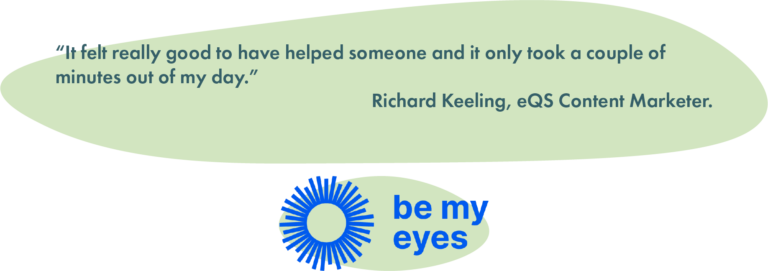
What do you think?
Whilst researching this blog I came across the following quote from a user of the WelcoME app, “It’s not the technology doing the job, it’s the technology empowering people.” I think this sums up perfectly the role new apps, pieces of software and websites should play in providing accessible approaches.
I want my blogs to start conversations so please let me know of any other accessible approaches you’ve discovered. Do you think there’s a current issue that could benefit from a new accessible approach? I’d also love to hear of any topics you’d like me to cover in future blogs.
Other blog articles
Necessary cookies are absolutely essential for the website to function properly. This category only includes cookies that ensures basic functionalities and security features of the website. These cookies do not store any personal information.
Functional cookies help to perform certain functionalities like sharing the content of the website on social media platforms, collect feedbacks, and other third-party features.
Performance cookies are used to understand and analyze the key performance indexes of the website which helps in delivering a better user experience for the visitors.
Advertisement cookies are used to provide visitors with relevant ads and marketing campaigns. These cookies track visitors across websites and collect information to provide customized ads.
Other uncategorized cookies are those that are being analyzed and have not been classified into a category as yet.
Analytical cookies are used to understand how visitors interact with the website. These cookies help provide information on metrics the number of visitors, bounce rate, traffic source, etc.
